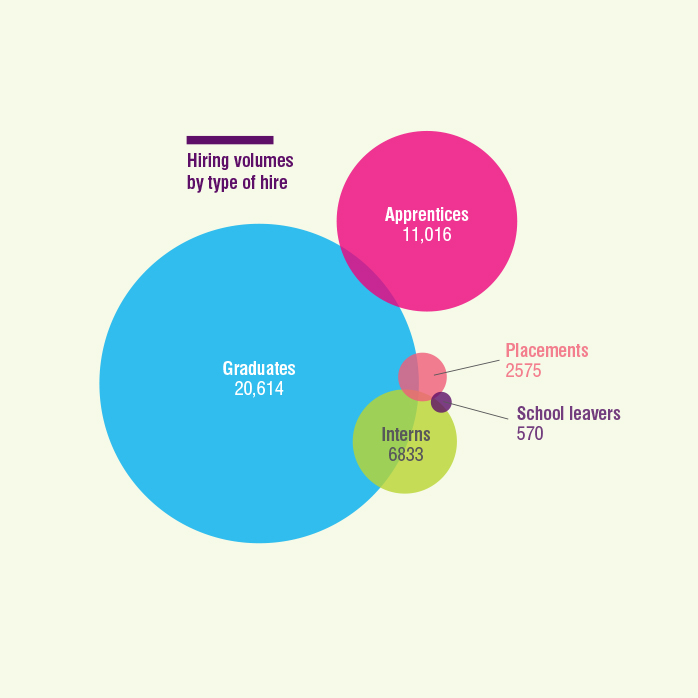As part of our work to support you, ISE goes to great lengths to ensure that you can make well-informed decisions about hiring and training student talent. Samuel Gordon, Research Analyst at ISE, shares new statistics from our latest Annual Survey to help.
The ISE Annual Survey is the most complete picture in the UK of the ways that employers are recruiting students. The 200 responding organisations provided year-on-year hiring trends for graduates, apprentices, interns, placements and school leaver hires.
Here are two key changes in our industry that are worth paying attention to.
Growth in apprentices
2017 marks a year of growth in salaries and vacancies. Overall, employers are offering more opportunities for all types of student hires and the median starting salary for graduates has risen by 2% to £28,000. 98% of employers recruited graduates this year.
More employers are recruiting apprentices too. Volumes are up by 19%, with over 1,700 more apprentices and a growth rate of 50% for degree-level apprenticeships. 65% of employers recruit apprentices, up from 55% last year. Apprentices are also 54% of the volume of graduate hires compared to 44% last year.
Three-quarters of employers have previously said that apprentice hiring had no impact on their graduate hiring. It will be interesting to see if this stays true in the future.
Improving diversity
Recruiters see improving diversity as a bigger challenge than responding to Brexit. Diversity is now the top-ranked challenge amongst student recruiters, up from number five last year. 55% of employers place it in their top three challenges in 2018. Organisations are taking this seriously.
Employers are actively trying to improve diversity too. 75% took specific actions to improve the diversity of their graduates in 2017. These actions varied widely across attraction and selection methods. For example, 24% ran outreach events for first or second-year university students, 18% used name-blind or university-blind recruitment, and 8% used contextualised screening to put a candidates grades into a wider context.
Past efforts to improve diversity also seem to be paying off. Employers with year-on-year data have improved their average gender diversity by 5% in just three years. There is still a long way to go: the average share of female graduate hires is only 43%, while the share of female students is 54%. But our progress is a sign that we’re on the right track.
Social mobility is a bigger challenge. In theory, two candidates of equal ability should have an equal chance of getting through an employer selection process. Statistically speaking, this means that the share of applicants with one characteristic should be broadly equal to the share of hires with another characteristic. But, less than 10% of employers know whether this is true for candidates from a low socio-economic background. They are either not tracking this information or not comparing statistics on applicants versus hires. Better tracking will be vital in future.
Competition for talent will continue to rise. Methods of recruiting students will continue to evolve.
We encourage you to dive into the report and act on the findings.


0 Comments